Subscribe to the Newsletter
Your cart is empty
Shop now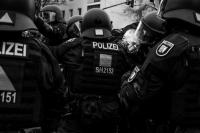

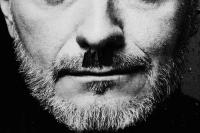


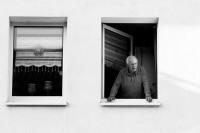

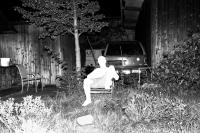

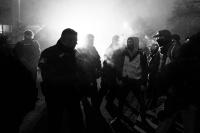
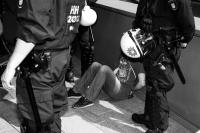
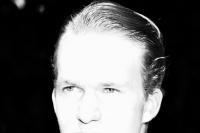

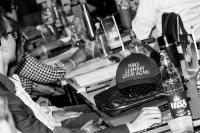
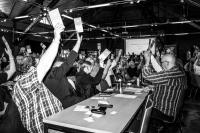

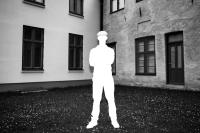
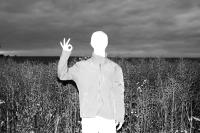
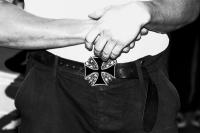
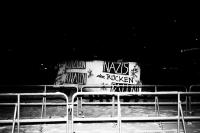




















Ashkan Shabani on documenting the normalization of extremism in contemporary Germany
“The Quiet Rise” by Ashkan Shabani is a documentation on the public face of extremism and the quieter ways it currently spreads
Iranian artist Ashkan Shabani was nominated by Der Greif Community Manager and Program Curator Francesca Hummler for a special feature following the 2025 Hamburg Portfolio Review. His ongoing project, “The Quiet Rise,” also appears in Der Greif Issue 18, guest-edited by Hank Willis Thomas. Through this work, Shabani examines the resurgence of far-right extremism in Germany, not through spectacle but through its quiet normalization in everyday spaces. He considers silencing and political legitimacy by including images of police silencing protestors. While rooted in Germany’s history of remembrance, the project speaks to a global reality: how hate adapts, embeds, and resurfaces within democratic societies worldwide.
Der Greif’s involvement in portfolio reviews such as Hamburg Portfolio Review reflects our ongoing commitment to photography education and to supporting emerging voices. If you are a community member interested in meeting our team, you can book a Face-to-Face session for the unique opportunity to connect directly with us.
Francesca Hummler: Your project, “The Quiet Rise,” addresses the resurgence of neo-Nazism and far-right extremism in Germany. What first compelled you to focus on this subject, and how did you begin approaching it visually?
AS: When I first arrived in Germany as a refugee, one of the earliest events I documented was a demonstration sparked by a leaked AfD audio discussing the expulsion of immigrants, including those born in Germany: a moment that felt like history repeating itself and echoed the normalization of extremist rhetoric I’d known in my past. As someone directly targeted by these ideologies – queer, foreign, and a refugee – I felt a personal urgency to address how such views were quietly embedding themselves into everyday life. I began by photographing rallies to witness events firsthand, but over time my approach shifted; I wanted to move beyond distance, to hear these individuals speak and understand their beliefs, leading me toward more immersive, investigative methods, including arranging conversations and meetings to document how these ideologies emerged in private and everyday settings.
FH: The work explores how extremism blends into the everyday, through things like coded language. How do you photograph something that often hides in plain sight, and what strategies help you reveal what might otherwise remain invisible?
AS: Documenting the rise of extremism through photography was challenging because so much of it is subtle and coded. I often spent long periods simply observing and listening without taking any photos, learning the language and symbols these groups use as they grow more creative in avoiding bans on overt Nazi imagery. I researched everything from posters and stickers to tattoos, piecing together meanings through reading, interviews, and careful analysis. Gradually, I moved closer and spoke directly with individuals about their ideologies and the symbols they used, like a casually displayed white-power sign, while also consulting activists and researchers who have tracked these movements for years. My strategy was to embed myself, listen deeply, and use photography to reveal what might otherwise remain invisible. It was a slow, deliberate process that allowed me to capture how extremism weaves into daily life.
FH: As a queer artist who fled Iran for asylum in Germany, how does your personal history shape the way you approach this project?
AS: As a queer artist and refugee, I’ve witnessed firsthand how extremism can overtake societies and change lives in irreversible ways, like in Iran, Iraq, Turkey, and Afghanistan. My approach to this project is deeply personal because I don’t want to see the same patterns repeated here in Germany. It’s not just a documentary endeavor for me, it’s both a personal story and a form of advocacy. I want people to see what is happening, to recognize the danger before it becomes normalized. Since I don’t have the power to vote or directly influence political decisions here, my way of responding is through images. I want to wake people up to the reality that if we remain silent, extremism can once again overtake our societies and history can repeat itself.
FH: In documenting extremism, are you also drawing parallels between far-right movements and the role of state power, particularly police forces, in shaping or suppressing dissent?
AS: When I document extremism, I also look at the broader context, including how it connects to society and how police and institutions respond. This is not a simple story of two opposing sides. On one side are extremists who believe they are “taking back” their country, and on the other are people defending democracy and trying to prevent history from repeating itself. What I often observe is that the police pay more attention to controlling the counter-demonstrators than the extremists, which creates a sense of imbalance and frustration that I want viewers to recognize. Through my work, I aim to show that this struggle is ongoing, that resistance exists, and that silence and inaction can allow history to repeat itself.
FH: Your work follows in a long tradition of politically engaged photography. Do you see yourself in dialogue with protest photographers such as Susan Meiselas or contemporary figures like Rafał Milach in Poland?
AS: I have great respect for photographers like Susan Meiselas and Rafał Milach, who use their cameras as tools of resistance and reflection. Their work shows that photography can do more than document; it can question power, challenge systems, and give visibility to those who are often silenced. I don’t see my work as directly comparable, but as part of the same ongoing dialogue. Like them, I believe photography carries a responsibility. When people are unaware of certain realities, it becomes our role as observers to make them visible. That sense of duty has guided me from the start. In Iran, as a queer person living under the threat of the death penalty, I felt an urgent need to challenge silence. My first documentary series showed that queer people are not an abstract idea but human beings who want to live, love, and exist freely. From then on, I promised myself I would never just document; I would use the tools I have to make people think, feel, and act.
FH: Memory and denial run in parallel throughout your project, especially in the German context. How do you see this tension shaping contemporary society, and what role do you think photography can play in making that tension visible?
AS: Germany is a country built on remembrance, but remembrance alone doesn’t prevent history from repeating itself. While working on “The Quiet Rise,” I was struck by how memory and denial can coexist, and how a society that teaches its past so thoroughly can still allow similar ideologies to quietly return. Coming from Iran, where propaganda rewrites history, I learned how easily truth can be hidden and how denial can become a form of comfort. That perspective shapes how I view Germany today. Photography allows me to challenge that comfort and to remind people that democracy is not inherited but defended every day.
FH: In your statement, you note that “The Quiet Rise” is not just a German story but part of a global shift. How do you see your work connecting with audiences outside Germany, particularly in places also grappling with authoritarianism and rising nationalism?
AS: What’s happening in Germany is not isolated but part of a global pattern. Across many countries, the same tactics appear: using fear to divide, rewriting history, and normalizing exclusion until it feels ordinary. The faces and symbols differ, but the logic is the same. Having lived under an authoritarian regime and later in a democracy where extremism is rising again, I recognize how these patterns begin not with violence, but with words, jokes, and silence. I want “The Quiet Rise” to speak to that shared experience and remind people that what happens here can happen anywhere if we stop paying attention. In that sense, I’m not just photographing Germany, I’m issuing a warning.
FH: Your work documents a threat that is ongoing, not finished. How do you navigate the ethical responsibility of documenting movements that can be both dangerous and seductive, without unintentionally amplifying them? How do you speak to your subjects and gain their trust when working on something that can carry real risks?
AS: This is something I struggle with constantly. When you photograph extremism, you walk a thin line between documenting and amplifying it, and I’m always aware of that. My goal is not to show their power but to reveal the silence around them, the way society gets used to looking away. I learned early in Iran that images have consequences. As a queer person living under criminalization, I understood both the danger and the power of visibility, which taught me to treat every image with care. In Germany, I follow the same principle: I never publish anything that could become propaganda or put someone at risk. I work slowly and intentionally, always questioning why a moment matters and what it reveals about the society around it. Earning trust in these spaces is complicated. With extremists, I listen more than I speak, not to justify them but to expose how ordinary their hate can sound. Yes, it’s risky. I’ve been followed and threatened. But silence feels like the greater danger. I know what happens when people stop paying attention, and I can’t let that happen again if I have the tools to make others see.
FH: In Issue 18, “Tomorrow is Today,” of Der Greif, guest-edited by Hank Willis Thomas, your work will appear alongside other artists exploring urgent social and political realities. How does being part of a collective context shape your perspective on “The Quiet Rise”?
AS: Being part of Der Greif Issue 18 feels meaningful because the theme, Tomorrow is Today, speaks directly to “The Quiet Rise” and the idea that what we ignore now will shape our future. Sharing space with artists who confront social and political realities reminds me that I’m not working alone and that struggles for democracy, truth, and equality are interconnected. Coming from where I do, I know what it feels like to think your story doesn’t belong anywhere, but being part of a collective platform shows me there is a growing community refusing silence. It gives me strength and helps me see my own work differently. Although “The Quiet Rise” is rooted in Germany, this dialogue reveals how it connects to broader questions of humanity and resistance. It reminds me that photography is not just about seeing but about connecting people across borders, fears, and histories.
FH: This project confronts difficult truths that many would prefer to ignore. What do you hope viewers carry with them after encountering your work?
AS: What I hope people take away is a sense of responsibility, not fear. Extremism doesn’t appear suddenly; it grows quietly through silence and indifference. In both Iran and Germany, I’ve seen how quickly darkness returns when people stop paying attention. As someone who had to leave everything behind because of hate and control, I no longer have the privilege of looking away. This work is my way of saying: don’t wait until it’s too late. I want people to look at these photographs and recognize their own role in shaping the future.
FH: You describe the project as ‘open,’ reflecting that the forces it documents are still unfolding. Where do you see “The Quiet Rise” heading next, in terms of form, exhibition, or research directions?
AS: The project remains open because what it documents hasn’t ended; it’s still unfolding. What’s happening in Germany is part of a broader shift across Europe and beyond. My next step is to expand “The Quiet Rise” to other countries and show how the same patterns appear under different flags and languages. This is not a local issue but a global one. I also want to share the work through exhibitions, publications, and talks: any space that can spark dialogue. My goal is simple: to put this story in front of people before it’s too late, while change is still possible.